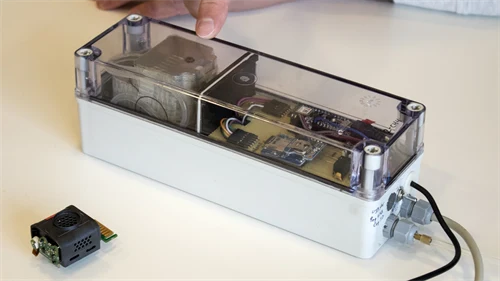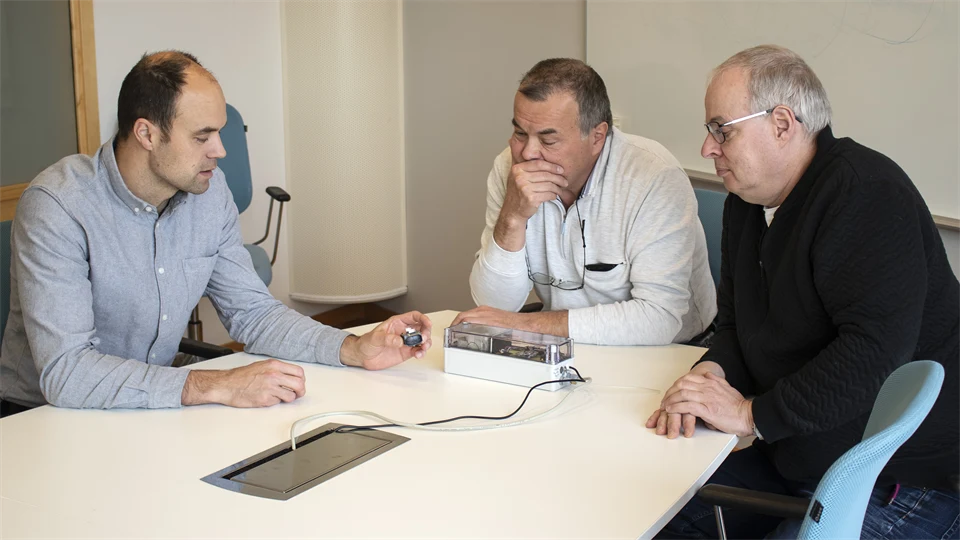Sensors measure the greenhouse gas methane for efficient mapping of emissions
Methane gas accounts for one-fifth of global warming. Bakhram Gaynullin, industrial doctoral student at Mid Sweden University and Senseair, has developed a measurement method to distinguish methane gas in small concentrations from water vapour, at a much lower cost than existing technology.
In addition to carbon dioxide, methane is the greenhouse gas with the greatest climate impact and therefore the importance of reduced methane emissions was raised especially in the context of the 2021 UN Climate Summit. Emissions are formed from decomposition of organic materials in oxygen-poor environments, for example from waste facilities, fibre banks, rice farms and agriculture. Methane gas is also the main ingredient in natural gas and was recently featured in the media in connection with the leaks from the Nord Stream 1 and 2 gas pipelines in the Baltic Sea.
— Methane is one of the more powerful greenhouse gases, so it is important to develop reliable monitoring to investigate the impact on the climate, says Bakhram Gaynullin, at Senseair company and industrial doctoral student in the research school FORIC at Mid Sweden University.
Through his work, together with researchers at Senseair and Claes Mattsson, Head of Department, and Göran Thungström, Associate Professor, at Mid Sweden University, he has developed a method for measuring methane in the air and distinguishing it from water vapour.
— It is difficult to measure low concentrations of gas and the results are affected by the presence of water vapour. Available solutions are often expensive and difficult to perform in the field and they are very energy intensive. The cost per unit can be several hundred thousand euros. There are simpler and cheaper measurement methods, but they work best in high concentrations of gas, says Bakhram Gaynullin.
The technique used by the researchers is called NDIR and is based on the absorption of infrared light in a specific wavelength range.
NDIR is a reliable and cost-effective technique with high sensitivity. But the difficulty is to distinguish the concentration of a particular gas in mixtures where several gases absorb the infrared light in the same wavelength range. The most common example in the atmosphere is water vapour and methane gas.
– The method we developed makes it possible to reach the sensitivity and accuracy comparable to more advanced instruments, but at a significantly lower cost, 10 to 20 times lower, he says.

Bakhram Gaynullin's prototype for measuring methane gas.
Methane gas is not only a major cause of global warming. There is also a great value in the gas, which makes it necessary to detect emissions. It can be used as an energy source or as a raw material in, for example, plastic. Another factor is safety.
– Methane is an explosive and flammable gas, which is why it is important to have an effective detection and alarm function, says Bakhram.
– Collaboration with leading players in all areas of technology is very important to create relevance for our research. For the measurement of methane, we see direct uses in our research that deal with the analysis of methane gas emissions from fiber banks. Through continued work, we see the opportunity to apply the technology to other areas and gases as well, says Claes Mattsson.
How can the technology be used to map emissions in the future?
— If the costs of the development and maintenance of equipment can be reduced, it is possible to develop networks of sensors. It provides opportunities to accurately map methane emissions across the larger area, Bakhram concludes.
Bakhram Gaynullins's research is part of the research project MiLo Water
Contact

Read more
